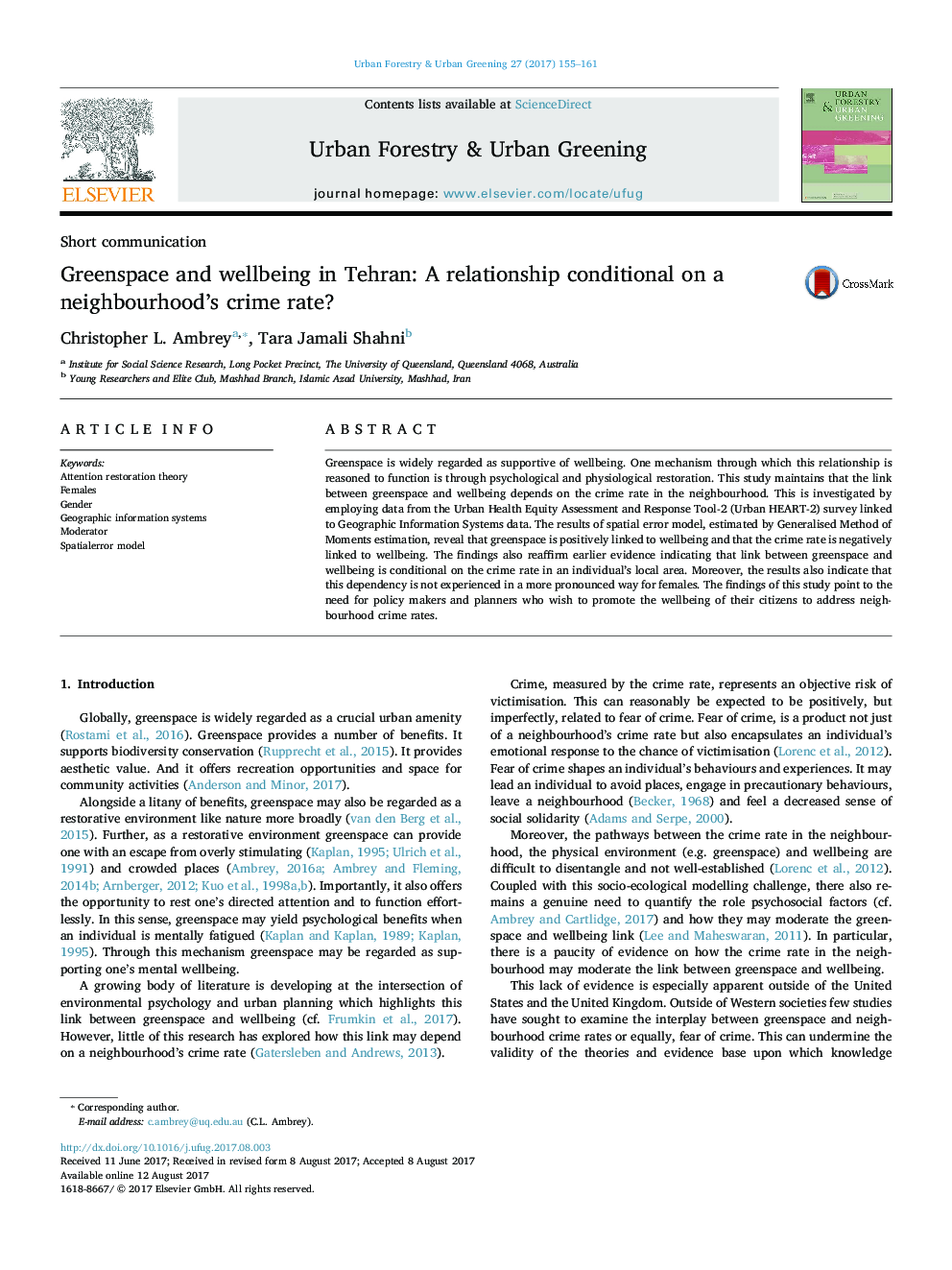| Article ID | Journal | Published Year | Pages | File Type |
|---|---|---|---|---|
| 6461717 | Urban Forestry & Urban Greening | 2017 | 7 Pages |
â¢Investigates the role of crime in moderating the greenspace and wellbeing link.â¢Greenspace is positively linked to wellbeing.â¢Crime is negatively linked to wellbeing.â¢Crime in the neighbourhood may diminish the wellbeing benefits of greenspace.â¢The crime-greenspace interaction is no different between males and females.
Greenspace is widely regarded as supportive of wellbeing. One mechanism through which this relationship is reasoned to function is through psychological and physiological restoration. This study maintains that the link between greenspace and wellbeing depends on the crime rate in the neighbourhood. This is investigated by employing data from the Urban Health Equity Assessment and Response Tool-2 (Urban HEART-2) survey linked to Geographic Information Systems data. The results of spatial error model, estimated by Generalised Method of Moments estimation, reveal that greenspace is positively linked to wellbeing and that the crime rate is negatively linked to wellbeing. The findings also reaffirm earlier evidence indicating that link between greenspace and wellbeing is conditional on the crime rate in an individual's local area. Moreover, the results also indicate that this dependency is not experienced in a more pronounced way for females. The findings of this study point to the need for policy makers and planners who wish to promote the wellbeing of their citizens to address neighbourhood crime rates.
